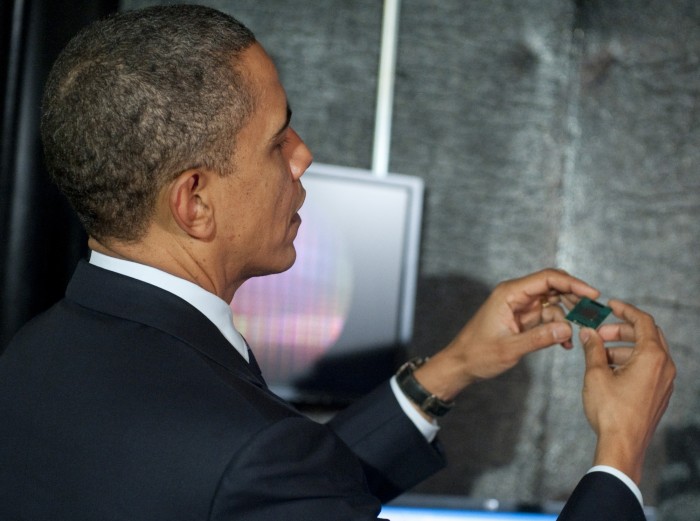Can the White House Make America’s Chip Industry Great Again?
The U.S. semiconductor industry faces increasing competition from overseas, but the government hopes a new panel of experts can go some way to ensuring that it maintains its dominance in the coming years.
The domestic industry still isn’t in bad shape: according to the White House, it still employs 250,000 workers and is the third-largest source of manufactured exports in the country. And Intel remains the world’s biggest chipmaker. But its competitive advantage has certainly been slipping.
That’s down to two main factors. First, the likes of Intel and AMD pulled up short on designs for mobile chips, an area now dominated by companies that specialize in low-power processors, such as ARM. Second, even when American companies, such as Apple, design chips that are built by U.S.-based organizations, like Globalfoundries, the hardware itself is now often manufactured overseas.

There are other threats looming, too. China, in particular, is pumping $100 billion into subsidizing its own semiconductor market, while the slowing of Moore’s Law is causing industrywide headaches of its own.
The new working group—made up of industry veterans from the likes of Intel, Qualcomm, and Microsoft—will seek to overcome some of those issues. John Holdren, director of the Office of Science and Technology Policy at the White House, explained in a statement that the group would “identify the core challenges facing the semiconductor industry at home and abroad and identify major opportunities for sustaining U.S. leadership.”
In reality, that will mean finding potential new strategies—from radical new geometries and optical computing approaches, to increasingly specialized chips—and then investing heavily. Some of that will be private, such as Samsung’s new commitment to invest $1 billion into its semiconductor facilities in Austin, Texas, but plenty will come from the government, too.
The all-American iPhone may remain somewhat of a fantasy for now, but at least a few more of its internal chips could end up being manufactured on home turf.
(Read more: The White House, Reuters, “The All-American iPhone,” “Intel Tries to Rearchitect the Computer—and Itself,” “Chip Makers Admit Transistors Are About to Stop Shrinking”)
Keep Reading
Most Popular
Large language models can do jaw-dropping things. But nobody knows exactly why.
And that's a problem. Figuring it out is one of the biggest scientific puzzles of our time and a crucial step towards controlling more powerful future models.
The problem with plug-in hybrids? Their drivers.
Plug-in hybrids are often sold as a transition to EVs, but new data from Europe shows we’re still underestimating the emissions they produce.
Google DeepMind’s new generative model makes Super Mario–like games from scratch
Genie learns how to control games by watching hours and hours of video. It could help train next-gen robots too.
How scientists traced a mysterious covid case back to six toilets
When wastewater surveillance turns into a hunt for a single infected individual, the ethics get tricky.
Stay connected
Get the latest updates from
MIT Technology Review
Discover special offers, top stories, upcoming events, and more.